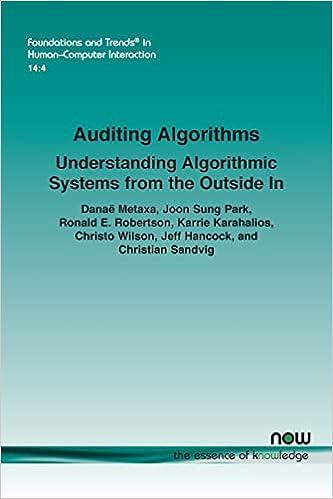Question
Company 1 is a logistics company with 90 trucks and 180 trailers. Company 1 has been given a proposal by company 2 (their biggest client).


Company 1 is a logistics company with 90 trucks and 180 trailers. Company 1 has been given a proposal by company 2 (their biggest client). The proposal by company 2 is they require 2 additional dry van (a boxed cargo compartment without refrigeration) loads per week with 1,500 round-trip kilometers.
Theory to know:
Company 1 Trucking typically assigns one driver to one truck (tractor). But this practice can constrain the available hours the tractor can operate. For example, laws require a driver to take a 10-hour break after 11 hours of driving. Further, a driver cannot work more than 70 hours in an eight-day period without taking a 34-hour break. To improve tractor utilization by avoiding constraints based on legal driving time requirements, some trucking companies use slip seating. This is a practice that permits greater tractor utilization by placing a fresh driver behind the wheel at the end of the former drivers shift. Slip seating is similar in practice to an airline company that keeps its planes flying longer by inserting fresh flight crews as the previous crew goes off duty. It also is effective to utilize team drivers that are commonly husband-wife teams. One person drives while the other sleeps. Relative to a single driver, this arrangement basically doubles the number of kilometers driven in a given week. Typically, teams are paid more, but additional line haul revenues offset the extra labor costs.
Another strategy to improve tractor utilization is to use trailer pools, commonly referred to as drop and hook systems. For example, trucking companies will leave an empty trailer with customers, who will load it with products as units are produced. When the trailer is filled, a tractor arrives, drops an empty trailer to replace the trailer just filled, then immediately hooks onto the loaded trailer and departs. Tractor utilization improves because tractors are not sitting idle while a customer loads a trailer. This approach is economically feasible because trailers are far less expensive to purchase and operate than tractors.
Most trucking companies keep some tractors on the fence as spares, in case one breaks down. There is considerable disagreement, however, over what constitutes too many spares. Some owners believe a truck line should put all available equipment on the road and rent a tractor if a spare is needed. Others disagree and maintain a small number of tractors in reserve. Currently, Company 1 keeps a small number of tractors and trailers out of service but prepared for duty in case a rig breaks down. Some managers believe this policy is an expensive luxury and that some of these idle rigs could be used to add the new routes requested by Company 2. When estimating a tractors practical capacity, management at Company 1 use 85% of total potential kilometers driven in a period. Theoretical (or 100%) capacity utilization is virtually impossible in the industry because of factors such as traffic and loading delays.
Question: All organizations have the potential to perform work, which is determined by the types of resources and the organizations capacity. Effective use of resources can be critical to a firm in any competitive market. In their efforts to efficiently use capacity, managers may ask questions such as: What portion of the available capacity is in use? Of the capacity in use, what portion is used productively? How can we increase the productive use of capacity? Why is a portion of the available capacity not in use? Can we eliminate unused capacity? Company 1's management is no different. In fact, management is not exactly clear about how to view capacity. Discuss the challenges that Company 1s management faces with defining and managing capacity. Consider various definitions of capacity, such as theoretical, practical, normal, and actual capacity. Based on the facts presented in the case, prepare an estimate of capacity for Kings (assuming one driver per rig without slip seating or team driving).
Exhibit 2: Balance Sheet COMPANY1 Balance Sheet As at June 30th, 2017 As at June 3 2017 Assets Current Assets Cash Accounts Receivable 200,000 300.000 500,000 Non-Current Assets Land Buildings 1,000,000 3,000,000 -1,250,000 18,650,000 Tractors, Trailers, and Equipment Accumulated Depreciation4.750.000 16,650,000 Total Assets 17,150,000 Liabilities Current Liabilities Accounts Payable Taxes Payable Current Portion of Long Term Debt 150,000 65,000 35.000 250,000 Non-Current Liabilities 1.865,000 1,865,000 2,115,000 S15,035,000 Notes Payable Total Liabilities Net Assets Represented by: Owner's Equity Issued Shares Retained Earnings 3.550.000 11,485,000 $15,035Step by Step Solution
There are 3 Steps involved in it
Step: 1

Get Instant Access to Expert-Tailored Solutions
See step-by-step solutions with expert insights and AI powered tools for academic success
Step: 2

Step: 3

Ace Your Homework with AI
Get the answers you need in no time with our AI-driven, step-by-step assistance
Get Started


